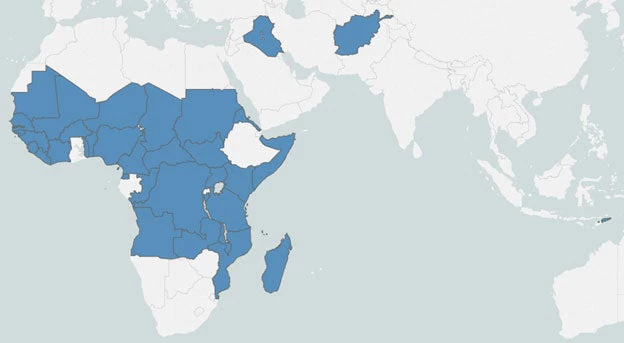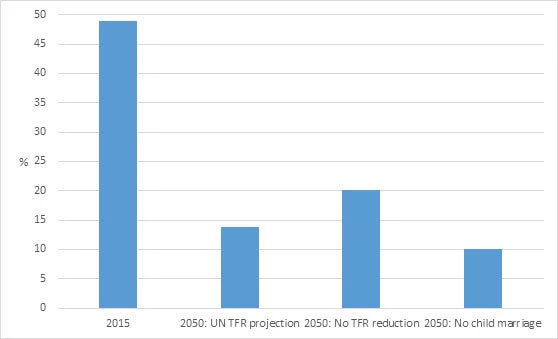This is a key message in the Global Monitoring Report 2015/2016 – Development Goals in an Era of Demographic Change, recently issued by the World Bank and the IMF. The countries in this category are labeled “pre-dividend,” (see Figure 1); two thirds of the world’s countries most affected by fragility, conflict and violence belong to this group.
Figure 1. Global Monitoring Report Demographic Country Typology: Pre-dividend countries.

The pre-dividend countries have stubbornly high rates of fertility and youth dependency, leading to rapid population and labor force growth, but they still have a large share of the population too young to work and save. By reducing fertility rates, these countries could create the conditions that are necessary for demographic dividends. The basic reason is simple: a reduction in fertility rates would accelerate labor force growth relative to population growth. The report identifies two demographic dividends. The first would be realized if accelerated labor force growth is translated into accelerated growth in income-generating jobs, the second if this increase in the population share at work also brings about an increase in savings and investment in human and physical capital.
In practice, this means that, at the same time as these countries address urgent policy priorities (often related to security, roads, education, and health), it is important that they think of the effects of policies on demography, most importantly fertility rates, and whether additional actions are needed to produce future demographic dividends. Fortunately, many of the policies that already are top priorities, such as providing basic education and health services to all, also help reduce fertility rates – for example, if girls are better educated and child mortality rates lowered, fertility rates will also decline as girls delay marriage, their first pregnancy, and enter the labor force in greater numbers. In this context, improved access for women to reproductive health services, including contraception, and other aspects of women’s empowerment could make a difference as they make it easier for women to bring their fertility rates down to wanted rates.
Simulations with MAMS (a World Bank CGE model) for Niger, the country with the world’s highest total fertility rate and very high rates of child marriage, quantifies the importance of fertility reduction for poverty reduction (see Figure): realizing the UN projected decline in Niger’s total fertility rate (TFR) from 7 in 2015 to 4.7 in 2050 could help reduce its poverty rate in 2050 to 14 percent, compared to 20 percent if the TFR were not to decline (Figure 2).
Figure 2. Niger: Extreme headcount poverty for alternative scenarios.

Source: World Bank. 2015. Global Monitoring Report.
The scenario “No Child Marriage” shows additional payoffs from reduced teenage fertility (something that would require reduced child marriage): poverty may decline to around 10 percent for the optimistic case of gradual elimination of child marriage and teenage pregnancies accompanied by increased schooling and labor force participation for teenagers with delayed pregnancies.



Join the Conversation